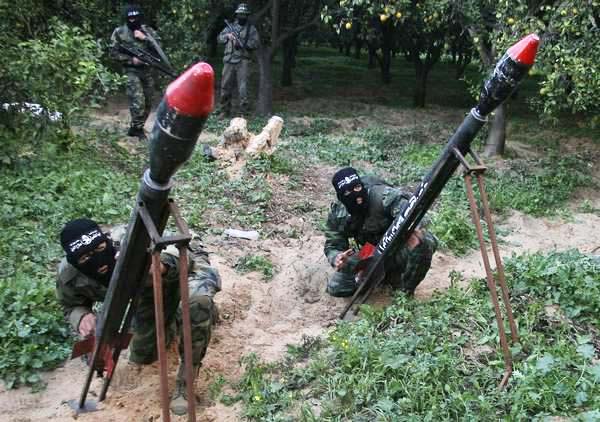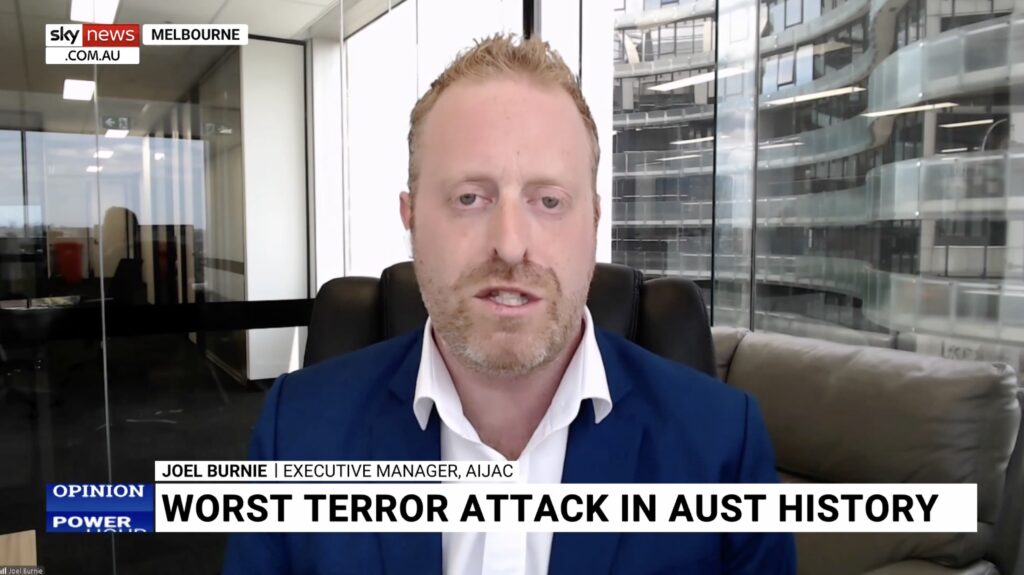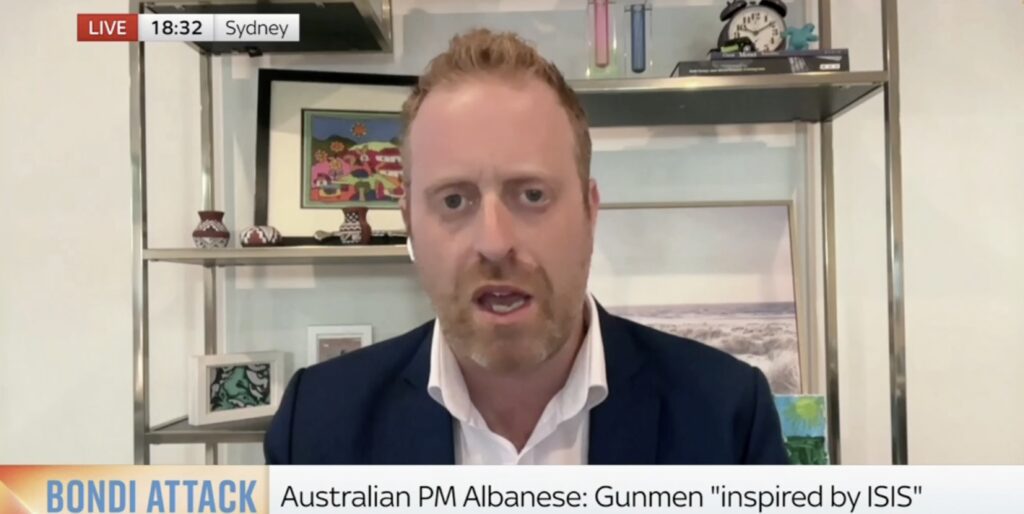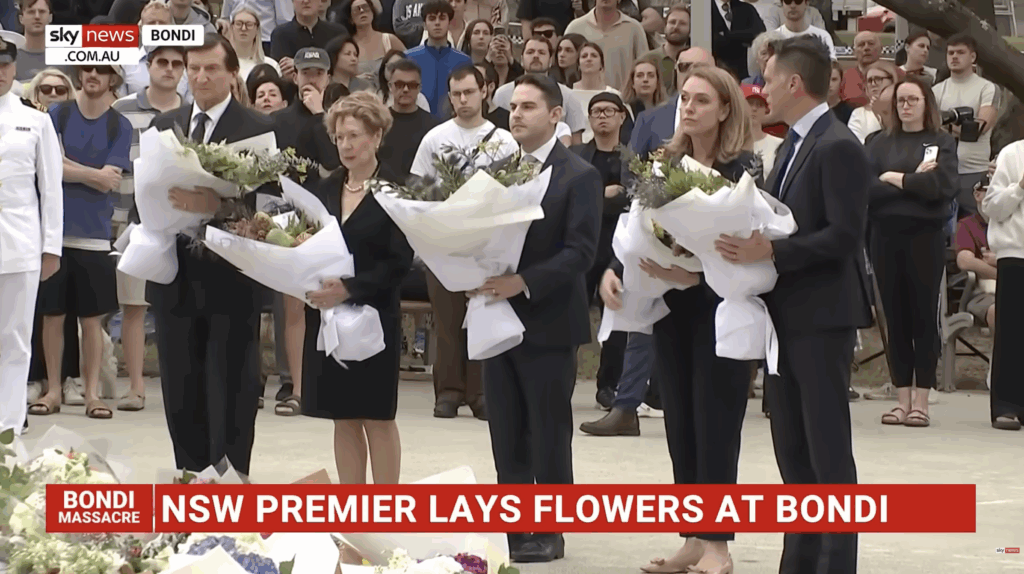UPDATES
New Hamas revelations – and strategy to gain legitimacy
August 14, 2015

Update from AIJAC
August 14, 2015
Number 08/15 #03
Today’s Update focuses on the implications of some new revelations about Hamas’ strategy and military preparations against Israel based on the interrogation of a Hamas operative captured by Israel in July. It also looks at Hamas’ regional charm offensive to gain legitimacy, and the important divisions within the terrorist group.
We lead with some good general reporting from the Times of Israel of what the captured Hamas operative, 21-year-old Ibraheem Adel Shehadeh Shaer, has told interrogators. One revelation is that Hamas has already succeeded in building a number of “attack tunnels” into Israeli territory since the last war, using material brought into Gaza for reconstruction of damaged and destroyed homes; another is that the road recently built by Hamas along the Gaza border fence is actually designed to facilitate massed vehicle attacks across the border. He also revealed that Hamas routinely stores explosives in the homes of its fighters. Importantly, he has allegedly revealed the extensive Iranian role in assisting Hamas with these war preparations – including cash, military training for Hamas fighters, weaponry, and electronics equipment for use against Israeli drones, and training of Hamas fighters to use paragliders to enter Israel. For his other alleged revelations and all the details, CLICK HERE.
Next up is top Israeli security specialist Ron Ben Yishai, looking at these revelations in some more detail. He says the military preparations occurring in Gaza are happening against the background of a profound split in Gaza between the Hamas political and military wings – with the former trying to mend bridges and gain funds from Saudi Arabia and Qatar, while the latter is drawing close to Iran in hopes of getting enough help to start another war with Israel once preparations are complete in another year or so. He says the Israeli coup of capturing Shaer – thus giving them information on the military wing’s plan – may allow Jerusalem to both gain the upper hand militarily and gain international legitimacy if and when another war occurs. For Ben Yishai’s knowledgeable analysis in full, CLICK HERE.
Finally, there is some analysis of Hamas’ diplomatic push for legitimacy in the Sunni world from Washington Institute Palestinian politics specialist Ghaith al-Omari. He notes four recent meetings which have been played up by Hamas – with former Quartet envoy Tony Blair, with Saudi Arabia, with Russia and with Turkey. While he says all occurred for different reasons, Hamas is nonetheless trying to portray them as public relations victories, and that absent push-back from the Palestinian Authority and the international community, Hamas may be able to turn these small steps into “cumulatively significant diplomatic achievements.” For al-Omari’s complete look at what Hamas is trying to accomplish diplomatically, CLICK HERE.
Readers may also be interested in:
- Reports say Hamas sources are now saying they cannot contemplate another conflict with Israel until they have anti-aircraft missiles to confront Israel superiority in the air – see here and here. Instead it plans to focus on terror attacks from the West Bank. Pointing out that this a tacit admission that it lost the last conflict – despite proclaiming it a great victory – and offering some additional analysis of what Hamas is saying is veteran Israeli columnist Evelyn Gordon.
- New reports about ongoing indirect Israel-Hamas talks about a deal for a ceasefire in exchange for easing of the Gaza blockade, allegedly being brokered by Tony Blair.
- A video about a small and cheap device devised by Israeli students which may help in the fight against Hamas terror tunnels.
- A frightening report that ISIS may now be using chemical weapons – presumably acquired from Syria’s supposedly destroyed stocks – against Kurdish fighters.
- An interesting look at the “spheres of influence” being carved out by various countries in Syria as the civil war continues.
- Readers can see AIJAC guest Sadanand Dhume – an expert on both Israel-India relations and on Islamist extremism in South and Southeast Asia – interviewed by Chris Kenny on “Viewpoint” on Sky News Australia at about 8:25pm on Sunday 16 August.
Hamas has dug several tunnels into Israel, in new Iran-funded war drive
TV report says Israel wary of tackling new threat for fear of triggering war; Hamas fighter held by Israel spilling info on latest plans
The Israel Defense Forces has confirmed that not a small number of terror tunnels have been dug by Hamas under the border into Israel, including one in the area of the Kerem Shalom border crossing, Israels Channel 10 reported.
According to the report, Israel has information on the tunnels, and has troops working around the clock to grapple with the threat. However, Israel prefers to wait rather than send troops into the Hamas-held Gaza Strip to tackle the tunnel network there, because it knows that if it does so, it will trigger a new war.
Irans assistance in the new Hamas war effort includes cash, military training for Hamas fighters, weaponry, and electronics equipment including for use against Israeli drones, the report said.
Hamas has also been training fighters in the use of anti-tank and anti-aircraft missiles, and is training recruits to fly paragliders across the border.
The report elaborated on material released earlier in the day by Israels Shin Bet security service. The agency on Tuesday morning published details of information on Hamass preparations for war that it said it had obtained from a Hamas fighter and tunnel digger who was arrested last month at the border. Ibraheem Adel Shehadeh Shaer has provided a wealth of information on the terror groups tunnel-digging in the Gaza Strip, its strategy for a future conflict with Israel, and its methods for obtaining cash from Iran, the Shin Bet said.
Shaer, 21, a resident of Rafah in the southern Gaza Strip, was arrested in early July as he tried to cross at the Erez border crossing from Gaza into Israel.
Under questioning by security officials, he disclosed a plethora of details about Hamas activities in Rafah, and in particular Hamass emergency procedures, as well as its intention to use tunnels dug under the border to attack Israel in a future fight.
Shaer told investigators that in recent months he had worked on some of the tunnels and was shown a passage dug from Rafah that led in the direction of the Kerem Shalom border crossing into Israel, the Shin Bet said in a statement.
The Hamas member provided data on tunnels in the Rafah area, including digging locations, access shafts, diggers and the routes of the tunnels. He also revealed that a new road recently laid down by Hamas near the border fence was installed for the purpose of carrying out surprise attacks using vehicles that would speed over the border into Israel.
According to the Shin Bet, Shaer was personally involved in various types of warfare training, including combat training, command methods, use of advanced weapons and sabotage.
During last summers war in Gaza, when the Israeli army battled against militias led by Hamas, Shaer served in the groups logistics support division and helped in the provision of military equipment and explosives to fighters. He also admitted to taking part in the military action by placing anti-tank charges and helping with observation posts.
Shaer said he was privy to many details about Hamas activities and the organizations senior figures in recent years. He offered investigators intel on Hamass links to Iran and the latters military support for the Gaza group.
Iranian support came in the form of cash, advanced weapons and sophisticated electronic equipment meant to interfere with control signals for Israeli drones over the coastal enclave. The Shin Bet said Shaer also briefed its agents on Iranian training for Hamas fighters in the use of paragliders capable of penetrating Israeli airspace.
The fighter provided details about Hamass elite units, the organizations anti-tank and anti-aircraft capabilities, the location of its observation posts and the three-kilometer range of its photographic capabilities into Israel.
In July, Hamas published a short video clip that it claimed showed the former chief of staff of the IDF, Lt. Gen. (res.) Benny Gantz, within rifle range near the border fence with the Gaza Strip during the 2014 fighting in the coastal enclave.
Shaer said Hamas has altered its combat strategy in the wake of the war, during which IDF troops penetrated deep into the Strip with the goal of destroying a network of cross-border tunnels that were used by Hamas to launch attacks inside Israel.
Shaer told investigators that material for Hamass war infrastructure is now being brought into Gaza under the guise of reconstruction programs aimed at repairing the damage caused during the fighting, when thousands of buildings were destroyed.
He also confirmed that fighters kept explosives and other materiel in their homes because Hamas commanders feared the groups weapons stores would be bombed by Israel. Shaer noted that he had stored several explosive charges of 50 kilograms each in his own home.
On July 31, an indictment was filed against Shaer in the Beersheba District Court for being a member of, and engaging in activities, with a banned organization, attempted murder, contact with an enemy agent, forbidden military training, and various firearms charges
Stuart Winer is a breaking news editor at The Times of Israel.
Back to Top
————————————————————————
Israel dealing with two Hamas entities
Analysis: The arrest of Hamas fighter Ibrahim Shaer reveals the complex reality in Gaza, where two separate bodies with different goals and interests the political wing and the military wing are competing over the Strip’s management and foreign relations.
Ron Ben-Yishai
Yediot Ahronot, 08.12.15, 15:33
The arrest of Hamas fighter Ibrahim Adel Shehadeh Shaer of Rafah is a very impressive achievement for the Shin Bet and probably also for the IDF, and was likely the result of creative planning and efficient execution.
The man was apparently captured on Israeli territory, and not incidentally. His arrest provides a detailed intelligence picture of the preparations being made by Hamas’ military wing, led by Mohammed Deif, ahead of the next round of fighting with Israel.
The actual publication of his arrest and the information he provided will likely force Hamas to reassess its preparations and military deployment on the southern part of the Strip, and will lead to delays in the preparations for a conflict with Israel.
But the exposure raises a more important point: In the Gaza Strip, things are being run by two bodies or entities of Hamas, the political wing and the military wing. They differ in their interests and political orientation, and are competing over the Strip’s management and foreign relations.
The political leadership, led by Khaled Mashal and Moussa Abu Marzouk outside the Strip and by Ismail Haniyeh and his friends inside the Strip, has a moderate Sunni orientation. Its main goal is easing the population’s distress for fear of a revolt against Hamas’ civil rule.
The fear for its survival is causing the political leadership to try to restore its relations with Egypt, so that it would open the Rafah crossing, and at the same time to move closer to Saudi Arabia and Qatar in order to receive money for the Strip’s reconstruction and the government workers’ salaries. That is the reason why the political wing is blatantly staying away from Iran: Mashal recently called off a visit to Tehran, favoring a visit to Riyadh instead.
The political leadership is also making an effort to receive the world’s recognition and especially Europe’s, so that the “charity organizations” would be able to collect donations and transfer them to the Strip, and in general in order to prevent Israel from gaining legitimacy to attack in the next round.
The military wing, on the other hand, is trying to move closer to Iran and is receiving aid from the Islamic Republic in the form of funds, weapons and training. The Izz al-Din al-Qassam Brigades, led by Mohammed Deif, know in advance that they have no chance while Egypt is ruled by General Abdel Fattah al-Sisi. They are suspected of helping the Muslim Brotherhood in Egypt and the Islamic State in Sinai, and there is plenty of evidence of that. So Hamas’ military wing is betting on Iran and, to a certain extent, receiving aid from Qatar.
The two Hamas wings are trying to maintain the calm at the moment (and Ynet correspondent Elior Levy notes that there are a few leadership officials who are mediating between the two wings and forming shared views). But they have different motives: Deif and his men are not doing it because of the population’s suffering. They just want to prevent Israel from disrupting their preparations for the next round of fighting until they are completed, and then they will act. Sources in Gaza believe it will happen within six months to a year.
Hamas preparing further surprises
Shaer’s interrogation also indicates that Hamas has drawn very detailed conclusions from Operation Protective Edge, in an organized and thorough process, and is implementing them. As in previous years, Hamas’ abilities – and mainly its military wing’s abilities are dramatically improving from round to round, both on the training and fitness level and on the creativity level.
Hamas feels its hasn’t utilized its underground abilities the different tunnels to the fullest, and is preparing surprises for the IDF in this field too. The competition between the counter measures developed by the IDF and the offensive creativity of Hamas is ongoing, according to Shaer’s testimony.
In an unusual manner, the Shin Bet the Prime Minister’s Office actually chose to publish the findings of the Hamas fighter’s investigation in great detail. There are three reasons for that:
1. Specifying the preparations and great effort invested by Hamas in various killing measures allows Israel to gain legitimacy for offensive IDF activity in the next round of fighting. The publications about the explosives being hidden and used within civilian homes and similar findings will undoubtedly be brought to the attention of the United Nations and will allow Israel to explain how and why the IDF is operating. The UN Human Rights Council won’t be able to deny either that the writing and information were on the wall.
2. The desire to help Prime Minister Benjamin Netanyahu’s campaign against the nuclear agreement with Iran in the United States. Shaer’s investigation clearly reveals that at least some of the funds Iran will receive after the sanctions against it are lifted will be used to wreak havoc and kill in Israel.
3. The desire to curb Hamas’ legitimization process in the world, which has been gaining momentum recently with the help of pro-Palestinian elements in Europe and North America.
Israel has learned to use the collected intelligence wisely in order to gain legitimacy and wage diplomatic battles. Gaza’s case is particularly complex: The Strip has a semi-legitimate government the political Hamas which Israel is holding a dialogue with, and the terroristic Hamas which Israel is waging an all-out war against.
The goal is to create a situation in which the next round of fighting will end in a quick and clear victory for Israel, and that requires international legitimacy.
Back to Top
————————————————————————
Hamas Ramps Up Its Quest for International Recognition
Ghaith al-Omari
Policy Alert, August 13, 2015
Absent proactive international pushback and constructive, energetic PA outreach to foreign partners, Hamas might continue to score small but cumulatively significant diplomatic achievements.
Recent weeks have witnessed a marked increase in diplomatic activities by Hamas officials. In June, the group’s leader, Khaled Mashal, met with outgoing Quartet peace envoy Tony Blair; the two have reportedly met again since then. In July, a Hamas delegation led by Mashal conducted a three-day visit to Saudi Arabia, during which they were received by King Salman and a host of other senior Saudi officials. On August 3, Mashal met with Russian foreign minister Sergei Lavrov, who invited him to visit Moscow in the future. And on August 12, Mashal met with Turkish president Recep Tayyip Erdogan. Hamas is also claiming that a delegation led by Mahmoud al-Zahar, a senior Gaza-based official with strong ties to the organization’s military wing, will soon visit Tehran.
Substantively, there is no common thread between these meetings, as each dealt with different issues. The meetings with Blair focused on Gaza reconstruction and consolidation of the ceasefire that ended last year’s clashes with Israel. The Saudi visit was widely interpreted in the context of the kingdom’s efforts to create a Sunni front to counter Iran’s increasing regional influence, particularly in the wake of the nuclear deal; as for why Hamas officials would risk being associated with such an agenda, the trip may reflect internal divisions within the group, as discussed below. The meeting with Lavrov, which took place on the margins of his visit to Qatar, was simply a continuation of Russian relations with Hamas. And Turkey is a longstanding Hamas supporter that routinely welcomes the group’s top officials as guests and residents.
Nor do these activities necessarily reflect a united Hamas front or, as the group is trying to portray, an unequivocal improvement in its international relations. For one thing, Blair’s initiatives have repeatedly come up against strong Egyptian opposition to anything that would benefit Hamas given the organization’s ongoing interference in Cairo’s affairs. They have also faced internal resistance due to strong differences within Hamas regarding many aspects of Gaza reconstruction, including the role of the Palestinian Authority and the extent of limitations that would be imposed on Hamas during the process.
Second, the delegation to Saudi Arabia notably did not include any members close to Hamas’s highly influential military wing in Gaza, and was not without its fair share of detractors from that camp. Additionally, Saudi foreign minister Adel al-Jubeir downplayed the visit’s significance.
Third, the Turkey meetings come amid reports that Ankara recently asked Saleh al-Aruri — a senior Hamas figure linked to terrorist activities in the West Bank — to leave the country, where he has been based since Israel him released from prison in 2010. Hamas denials of these reports have not been definitive, and Turkish officials, while not confirming Aruri’s expulsion, have stated that he is no longer in Turkey.
Fourth, the announcement of Zahar’s purported trip to Tehran comes soon after Iranian authorities canceled a previously scheduled visit by Mashal. If the Zahar visit materializes, it will add further credence to reports of a growing rift between the group’s Gaza military wing and its diaspora leadership.
Despite these distinct agendas, the recent visits have one important commonality: they are all being vocally advertised and played up by Hamas, often beyond what their substantive significance would warrant. The group seeks to turn these activities into a public relations victory, in keeping with its longstanding strategy of presenting itself as an acceptable interlocutor in the international arena. Yet aside from Hamas’s traditional backers in Qatar and Turkey, these efforts have so far largely failed to produce any international engagement beyond meetings with the occasional Western academic or parliamentarian.
Even so, the group is presenting this close succession of diplomatic events as a breakthrough. Hamas will no doubt use them to build momentum behind its bid for international legitimacy while avoiding the measures required by the international community: recognition of Israel, renunciation of terrorism, and adherence to past agreements.
As for the PA and the Palestine Liberation Organization, both have been largely silent on these developments, with the exception of a few vaguely worded statements by mid-level officials and spokesmen warning of “ploys to separate Gaza from the West Bank.” Worryingly, these reenergized Hamas efforts coincide with a marked absence of robust high-level diplomacy by PA officials. In particular, the PA’s relations with its traditional moderate Arab allies are at a low point, ranging from tepid to openly hostile.
To be sure, Hamas is no closer to breakthrough where it really matters: with the United States, other Western states, or key Arab countries such as Egypt, Jordan, and the United Arab Emirates. Yet without proactive international pushback and constructive, energetic PA outreach to foreign partners, Hamas may well be on its way to scoring additional small but cumulatively significant diplomatic achievements.
Ghaith al-Omari is a senior fellow at The Washington Institute.
Tags: Israel





